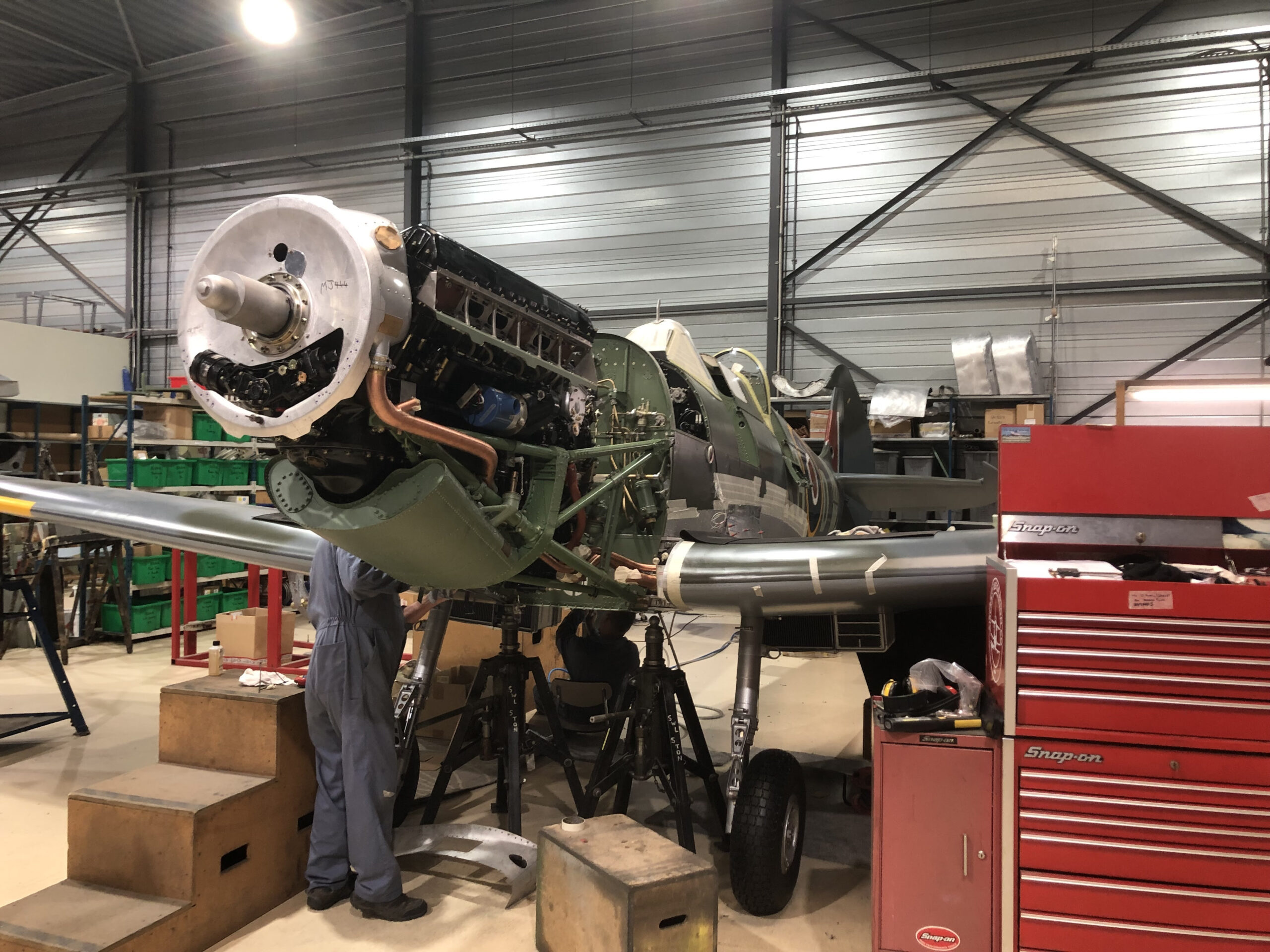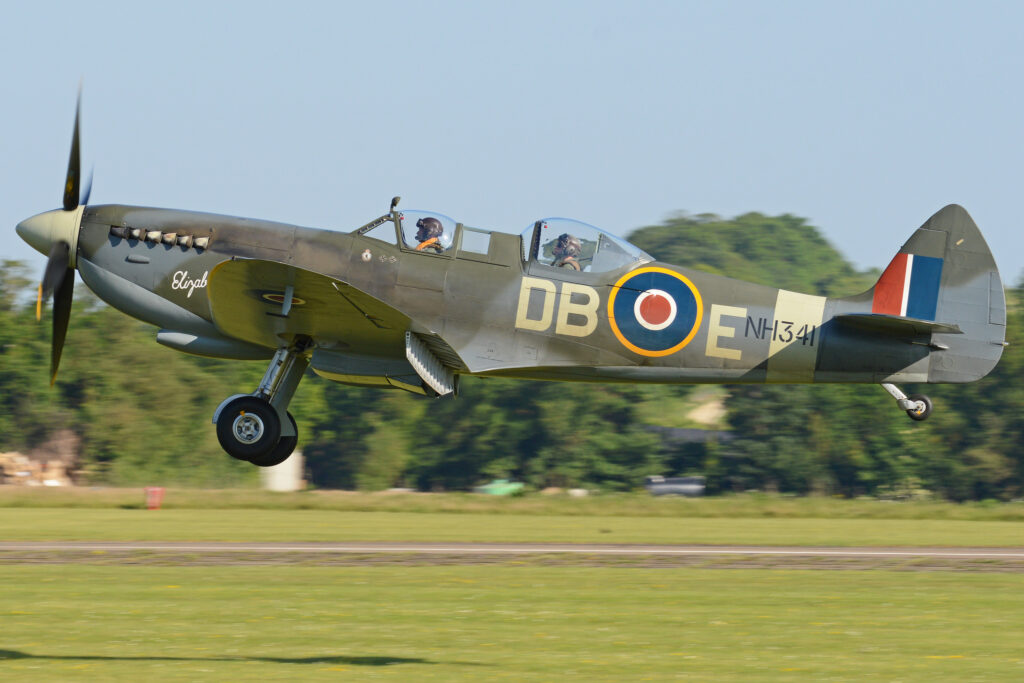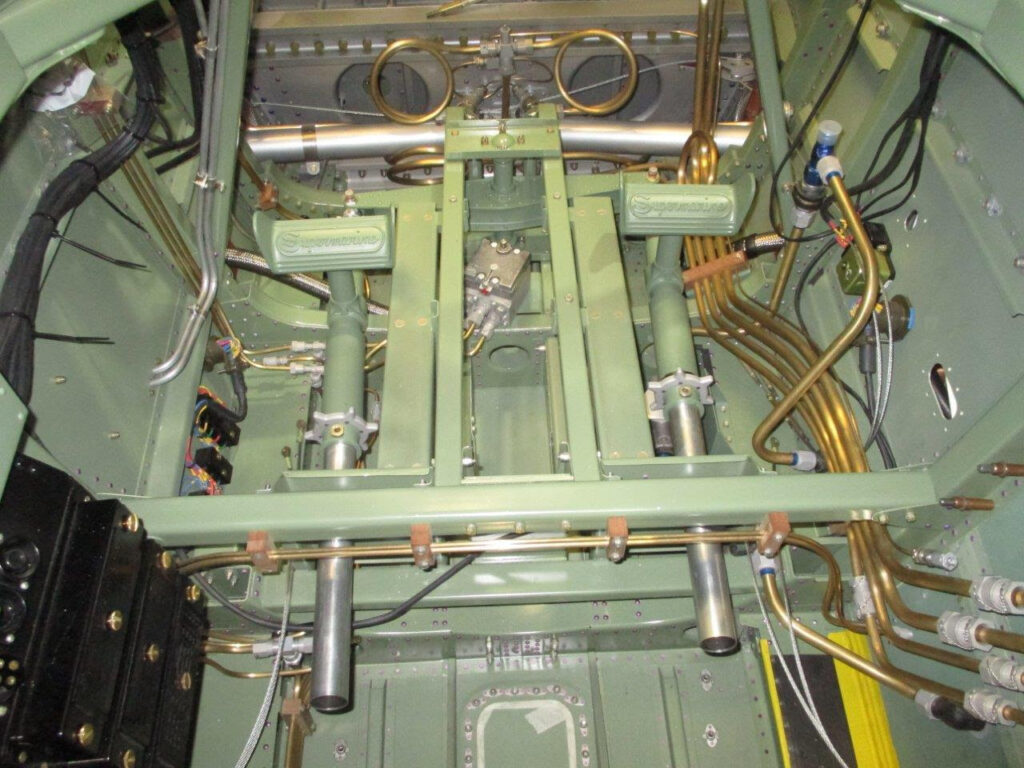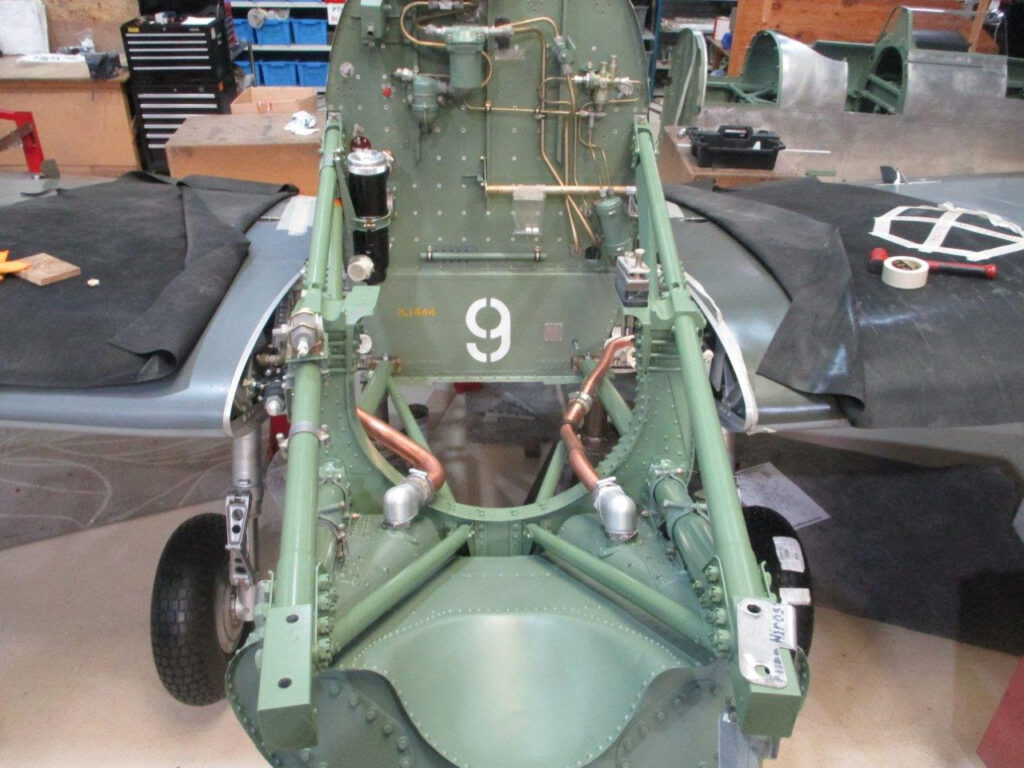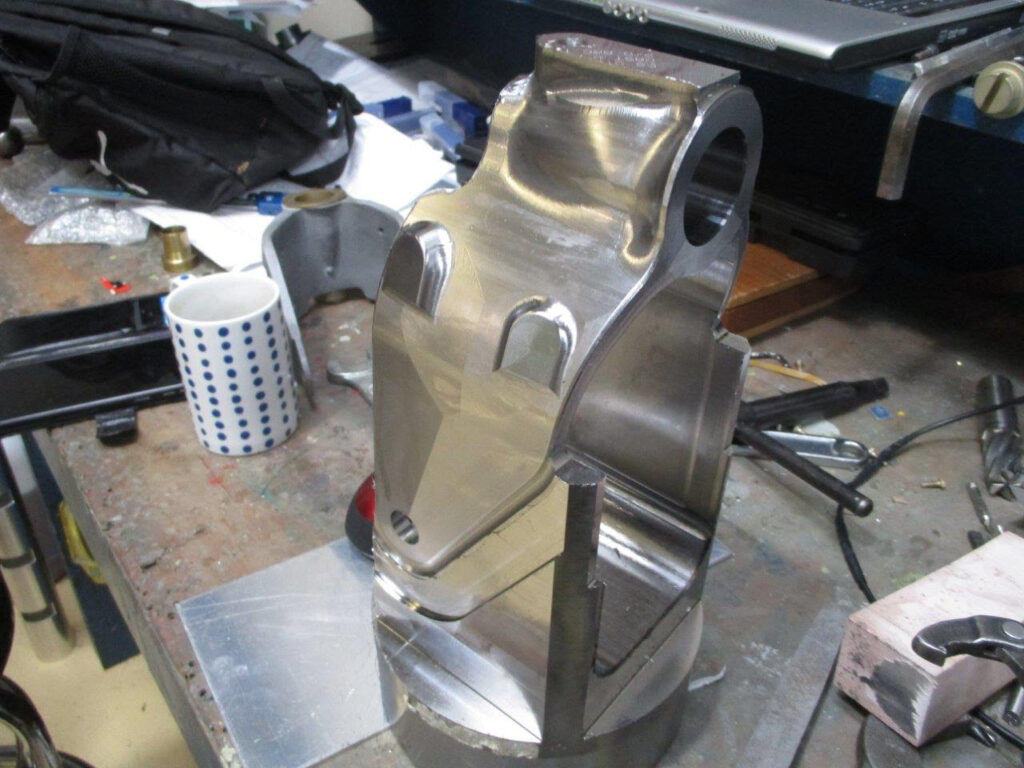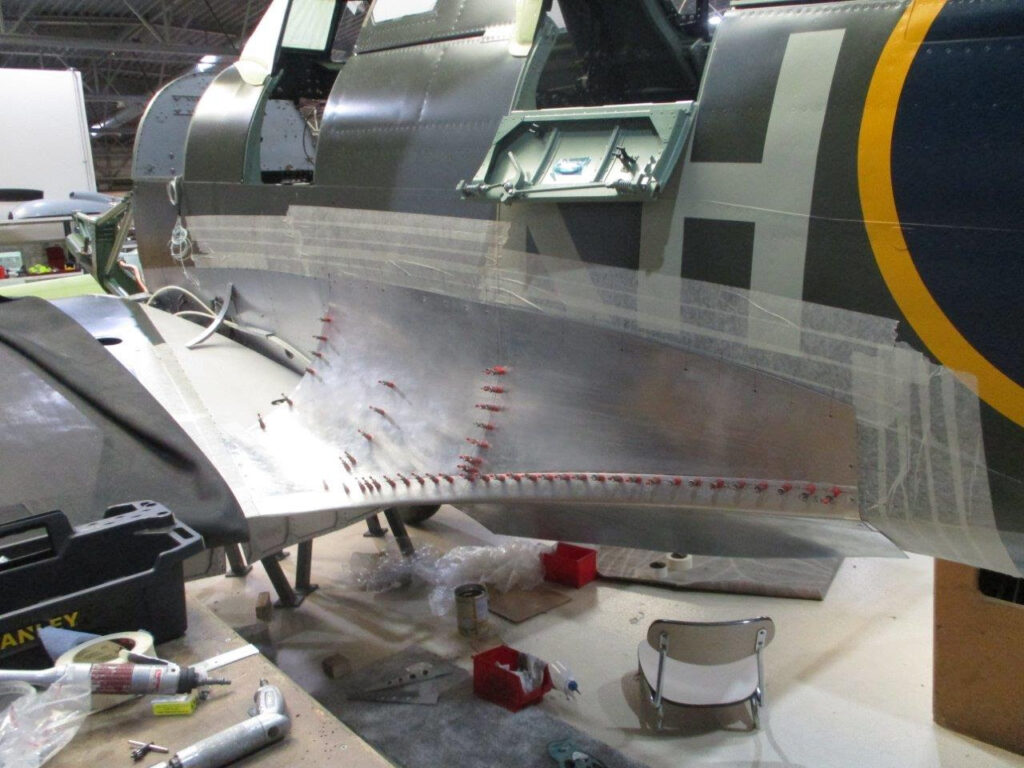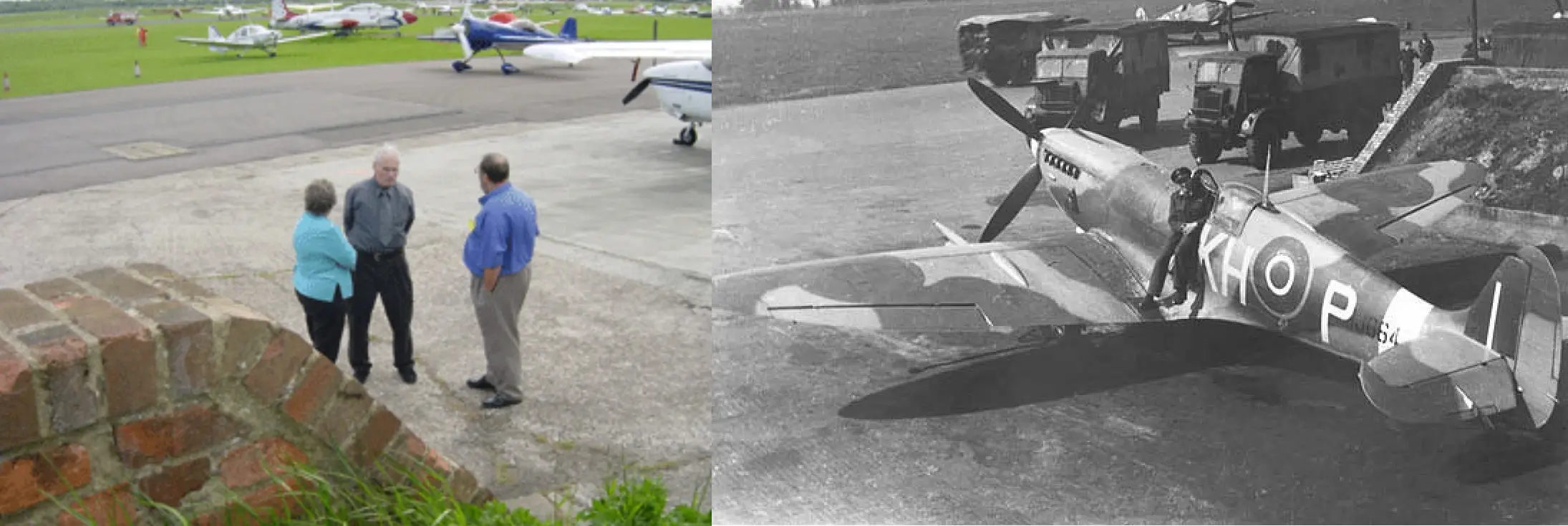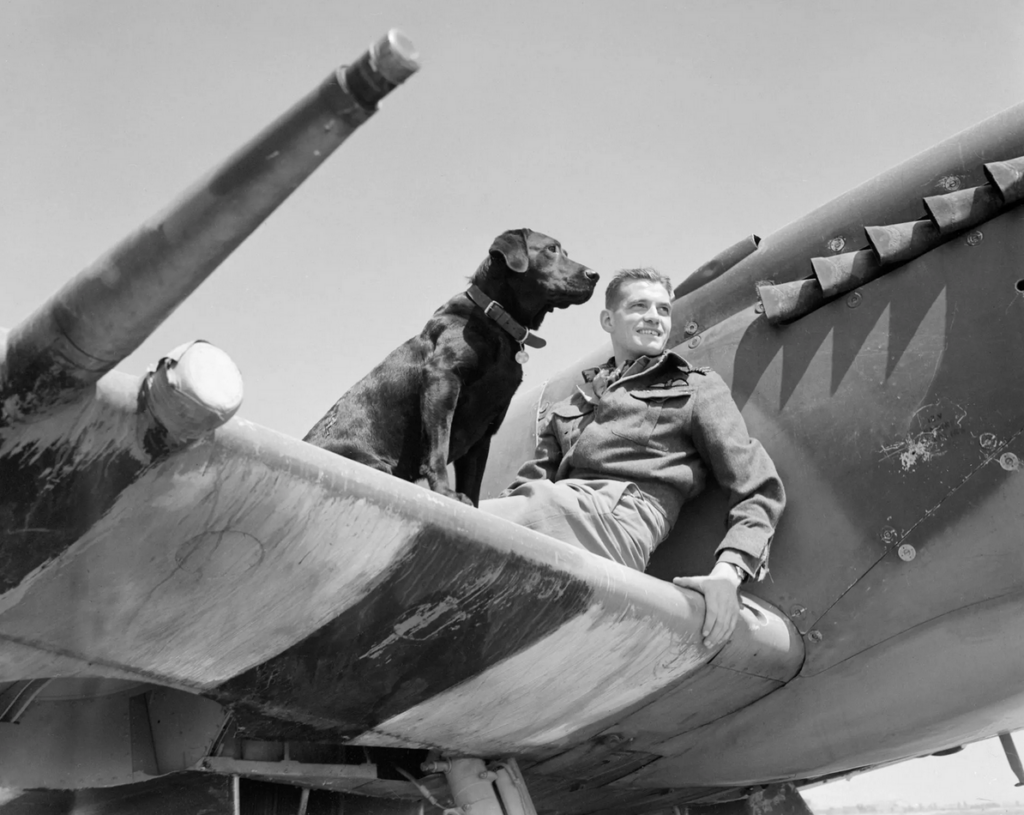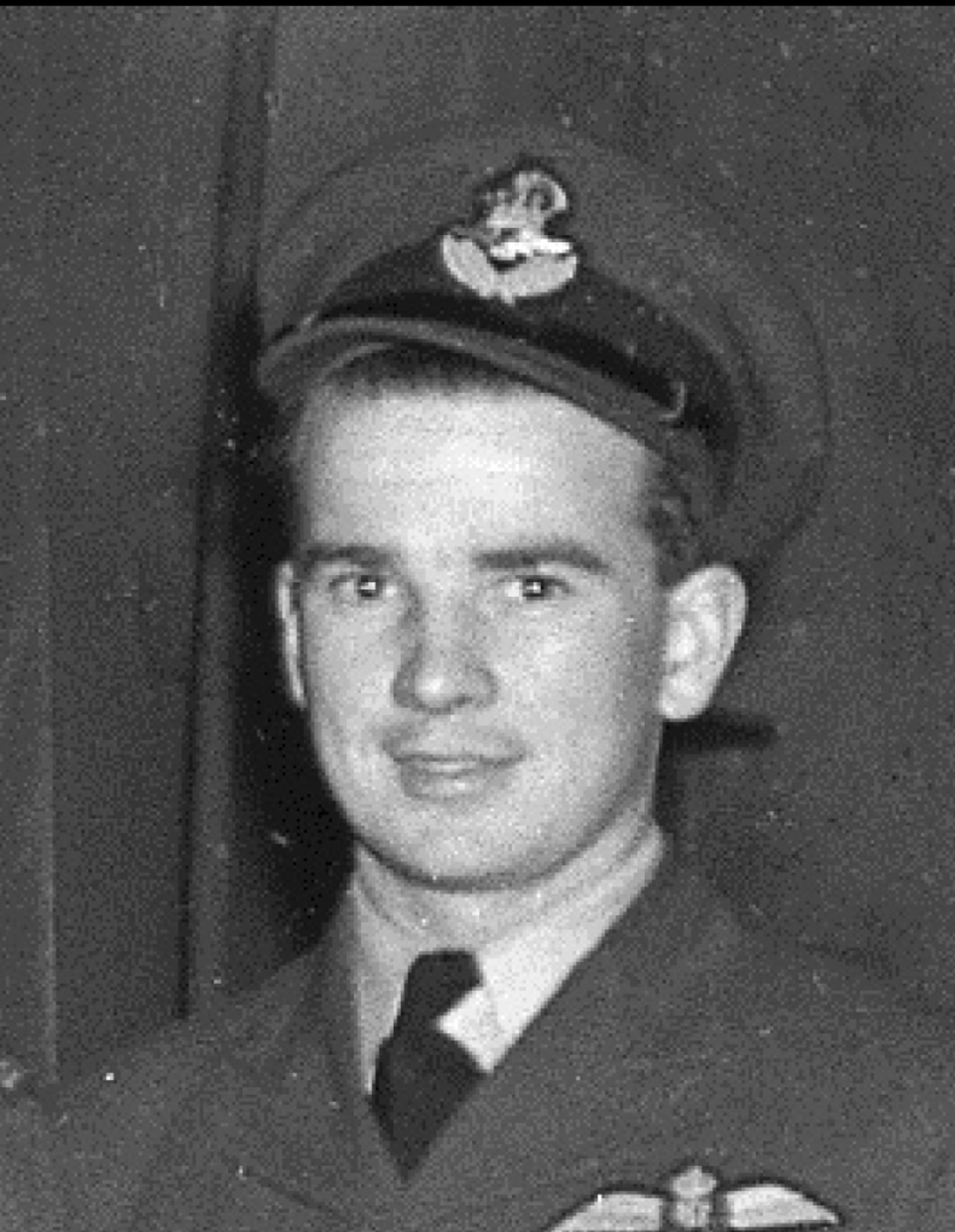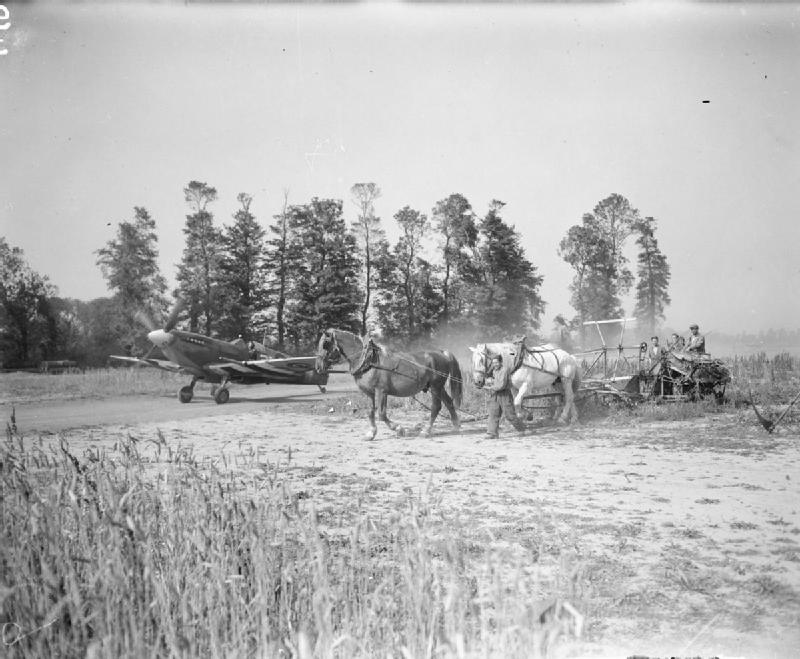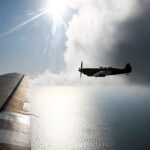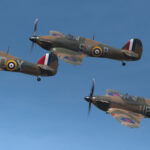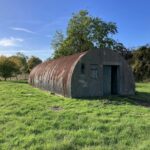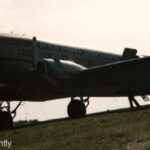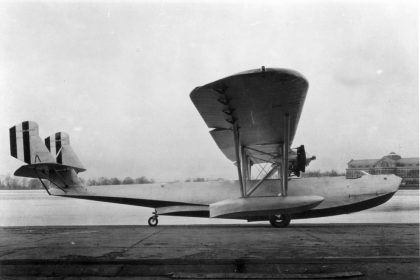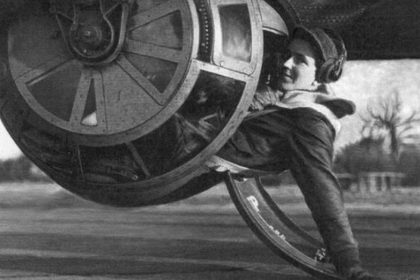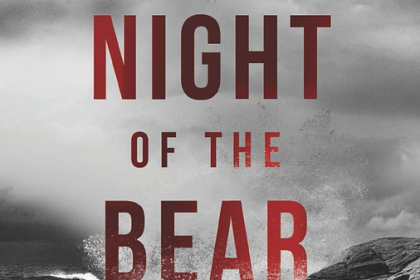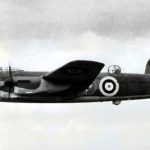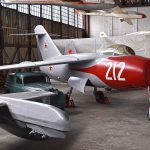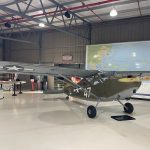By Richard Mallory Allnut
Back in March 2017, Supermarine Spitfire Mk.IXe NH341 made its first post-restoration flight following a three-year restoration with the Aircraft Restoration Company (ARCo) in Duxford, England. The rebuild had seen the Spitfire, nicknamed Elizabeth, reconfigured as a two-seat Tr.9 trainer variant. Operating with Aero Legends at the company’s various locations in the south of England, Elizabeth has provided the Spitfire flying experience to hundreds of happy customers in subsequent years.
Business has been good for Aero Legends. In 2021, the company announced that they had commissioned the rebuild of another Supermarine Spitfire to join their stable in two-seat configuration, this being Spitfire Mk.IX MJ444, a WW2 combat veteran which served with several Royal Canadian Air Force (RCAF) fighter squadrons in Europe, just like her sister-ship Elizabeth.
ARCo is again overseeing the restoration effort, with Airframe Assemblies being a major subcontractor, supplying key structural components at their world-renowned facility on the Isle of Wight. Aero Legends’ in-house engineering division, Vintage Aero, is also assisting with the rebuild of several key items.
The restoration is now at an advanced stage, with the basic airframe essentially complete and systems integration in full swing. We have just received the latest progress update from Aero Legends and reproduced it below, with permission.
The engine frame has been fitted and split-pinned. The oil tank is on and various pipes have been installed as far as we can go without the engine. The oil suction filter, vacuum regulator, pre-oil pump, and spin-on filter assemblies have also been fitted. The engine is due to arrive on Tuesday (February 6th – see below) and the plan is to install it immediately. Systems parts continue to be installed, including both sets of rudder pedals, the airbox control, and the pitot-static system. The undercarriage selector is being assembled and will soon be ready for bench test.
The rear fillet fairings are well underway and will be completed next week. Work will progress forward one panel at a time, finishing with the leading edge wrap-around fairings. The cowling rails are being formed and the front diaphragm has been cut and trimmed. The new tail wheel fork has just come off the machine and will be separated from its mounting. This is the first time this component has been made new since Spitfire production ceased! The ailerons from Spitfire Mk.IX TD314 will be removed from that airframe and trial-fitted to MJ444. If all is satisfactory, they will serve as templates for MJ444’s new ailerons.
MJ444’s Service History:
MJ444 rolled off the Castle Bromwich production line during 1943. The aircraft joined 411 Squadron RCAF on September 21st, 1944 before transferring 403 Sqn RCAF. Flying Officers Mac Reeves and Stephen Butte DFC are known to have flown MJ444 during its time with 403 Sqn (part of 127 Wing under the leadership of legendary Wing Commander James Edgar ‘Johnnie’ Johnson). The photographs below show Stephen Butte at North Weald in 1944 (right) and upon his return to the same revetment in 2002, where Aero Legends now conducts its flying experiences.
On December 14th, 1944, MJ444 transferred to 443 Sqn RCAF, another unit within 127 Wing, while based at Advanced Landing Ground B.56 in Evere, Belgium. While with 443 Sqn, two of MJ444’s regular pilots included Pilot Officer P.C. Gomm, a Brazilian, and Flight Lieutenant Edmund Harold ‘Hal’ Fairfield, a Canadian from Cardinal, Ontario.
Hal Fairfield was a highly experienced fighter pilot. He had cut his teeth on single engine fighters in late 1942/early 1943, flying Hawker Hurricanes with 129 Squadron RCAF from RCAF Dartmouth in Halifax, Nova Scotia. (Interestingly, one of the fighters he flew with 129 Sqn also survives today, this being Hurricane Mk.XII RCAF 5667, which is presently operated by the Military Aviation Museum in Virginia Beach, Virginia.) In mid-1943, Fairfield transferred to 127 Sqn RCAF, flying coastal patrols from RCAF Gander in Newfoundland. In January 1944, Harold Fairfield travelled to the UK aboard the SS Pasteur along with the rest of 127 Sqn. Once in England, 127 reformed as 443 Sqn. They were soon taking the fight to the enemy, making regular trips over the channel to soften up coastal defenses in France. They participated in the D-Day landings as well, with Fairfield and his squadron-mates protecting the skies over Juno Beach, the Canadian beachhead in Normandy.
Fast forward to January 13th, 1945, when 443 Squadron had repositioned to Belgium. Hal Fairfield flew MJ444 on a ground attack sortie this day during the Battle of the Bulge. On the return trip home, having helped his squadron take out five enemy vehicles (and damaging a further twenty five) near St. Vith, Belgium, Fairfield’s fighter began trailing engine coolant. MJ444 must have sustained ground-fire damage during the fight, but without Fairfield realizing it, as it was 443’s Squadron leader, Thomas Decourcy, who first noticed the problem. Fairfield nursed his crippled Spitfire as long as he could, managing to pass back over friendly lines before the inevitable engine fire erupted and forced him to bail out. Fairfield made it down safely, although not without incident; his parachute snagged a tree. Thankfully a local farmer brought along a ladder and helped rescue the stranded pilot from his awkward perch. A short while later, a U.S. soldier took Fairfield back to base in his jeep.
MJ444 wasn’t so lucky as Fairfield, of course, burying itself into the Belgian mud, where it lay until an aviation archeology team located and dug up what remained in 2020. What they found now serves as the basis for Aero Legends’ resurrection of MJ444 – albeit in two-seat form. We can’t wait to see the aircraft take flight – and the same is true for Fairfield’s family in Canada.
Hal Fairfield survived WW2 and married his wartime sweetheart, Sylvia Gething, who had served with the Women’s Royal Naval Service as a Rotor Print Operator with the Admiralty Signals and Radar Establishment in Haslemere, Surrey between 1943 and 1945. Returning to Canada after the war, they raised four children and lived a happy life in Cardinal, Ontario.
The author wishes to thank Steve Daoust very much for the details about his father-in-law, E.H. Fairfield in the preparation of this article.
[wbn_ads_google_three]
Throughout the restoration process, Aero Legends has been working with Bicester-based film company Ralle, which has documented the early stages of the project with beautifully produced videos. Click the image below to watch all the episodes.
In honor of the 80th anniversary of D-Day, Aero Legends is proud to announce an exclusive opportunity to soar through history alongside the legendary C47/DC3 Dakota. To book your flight in this iconic aircraft visit www.aerolegends.co.uk.
https://vintageaviationnews.com/warbirds-news/aero-legends-offering-spitfire-flights-alongside-c47-dc3-during-d-day-80th-celebrations.html







